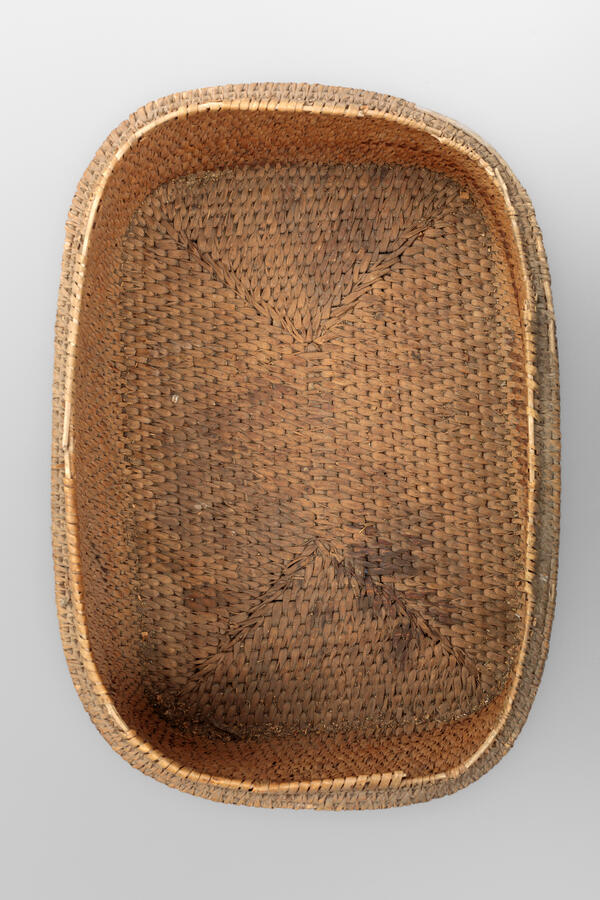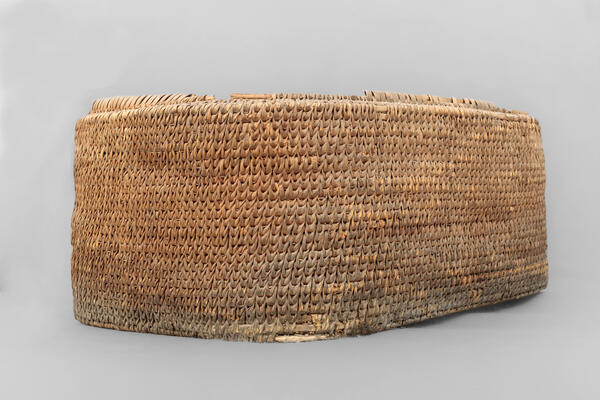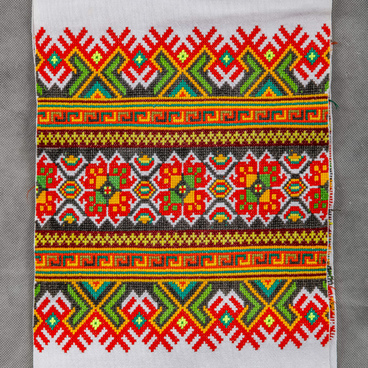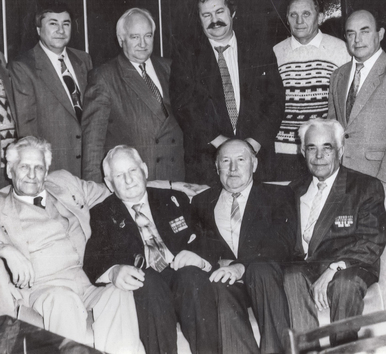A kornevatik is a type of a wicker box. It was usually made from cedar root and bird cherry twigs. It was widely popular with the Ob Finno-Ugric peoples — the Khanty and Mansi. They usually used this type of box to store household utensils, ammunition, and food.
The forester and local historian Alexander Alexandrovich Dunin-Gorkavich (1854–1927), who visited almost the entire Ob North in the late 19th — early 20th centuries, wrote, “Instead of chests and boxes, the Ostyaks use wicker kornevatiks… Kornevatiks come in different shapes and sizes, but oval ones are the most durable and have the highest capacity.”
Kornevatiks were woven in the following way: a tape was threaded through the holes, which had been made with an awl. After that, the pieces were pulled tight so that the vessel remained solid when dried. A kornevatik could be round or rectangular — the shape depended on the base made of a rod.
The lid was woven separately and tied with rawhide straps. The same straps were used to make the handle. Weaving kornevatiks was time-consuming and required physical effort, therefore it was traditionally considered men’s work.
Kornevatiks were widely used for storing various small household items: arrowheads, pieces of horn, plaques, and tools. Large kornevatiks were used as chests to store dishes and dressed skins, including “kamus” (the skin from the shin of a deer).
Kornevatiks were also woven to store ritual objects. Due to the high hygroscopicity of the material (the ability to absorb moisture from the air), and dense weaving patterns, these items protected the contents from spoilage and dampness. It was easy to carry them and take on trips.
In the 20th century, kornevatiks lost their economic importance. Gradually, the craft had disappeared in most of the territories. Although most museums in the Khanty-Mansi Okrug have kornevatiks in their collections, there are very few modern artisans left. In 2010, the kornevatik was nominated for one of the wonders of the Finno-Ugric world.
The forester and local historian Alexander Alexandrovich Dunin-Gorkavich (1854–1927), who visited almost the entire Ob North in the late 19th — early 20th centuries, wrote, “Instead of chests and boxes, the Ostyaks use wicker kornevatiks… Kornevatiks come in different shapes and sizes, but oval ones are the most durable and have the highest capacity.”
Kornevatiks were woven in the following way: a tape was threaded through the holes, which had been made with an awl. After that, the pieces were pulled tight so that the vessel remained solid when dried. A kornevatik could be round or rectangular — the shape depended on the base made of a rod.
The lid was woven separately and tied with rawhide straps. The same straps were used to make the handle. Weaving kornevatiks was time-consuming and required physical effort, therefore it was traditionally considered men’s work.
Kornevatiks were widely used for storing various small household items: arrowheads, pieces of horn, plaques, and tools. Large kornevatiks were used as chests to store dishes and dressed skins, including “kamus” (the skin from the shin of a deer).
Kornevatiks were also woven to store ritual objects. Due to the high hygroscopicity of the material (the ability to absorb moisture from the air), and dense weaving patterns, these items protected the contents from spoilage and dampness. It was easy to carry them and take on trips.
In the 20th century, kornevatiks lost their economic importance. Gradually, the craft had disappeared in most of the territories. Although most museums in the Khanty-Mansi Okrug have kornevatiks in their collections, there are very few modern artisans left. In 2010, the kornevatik was nominated for one of the wonders of the Finno-Ugric world.





